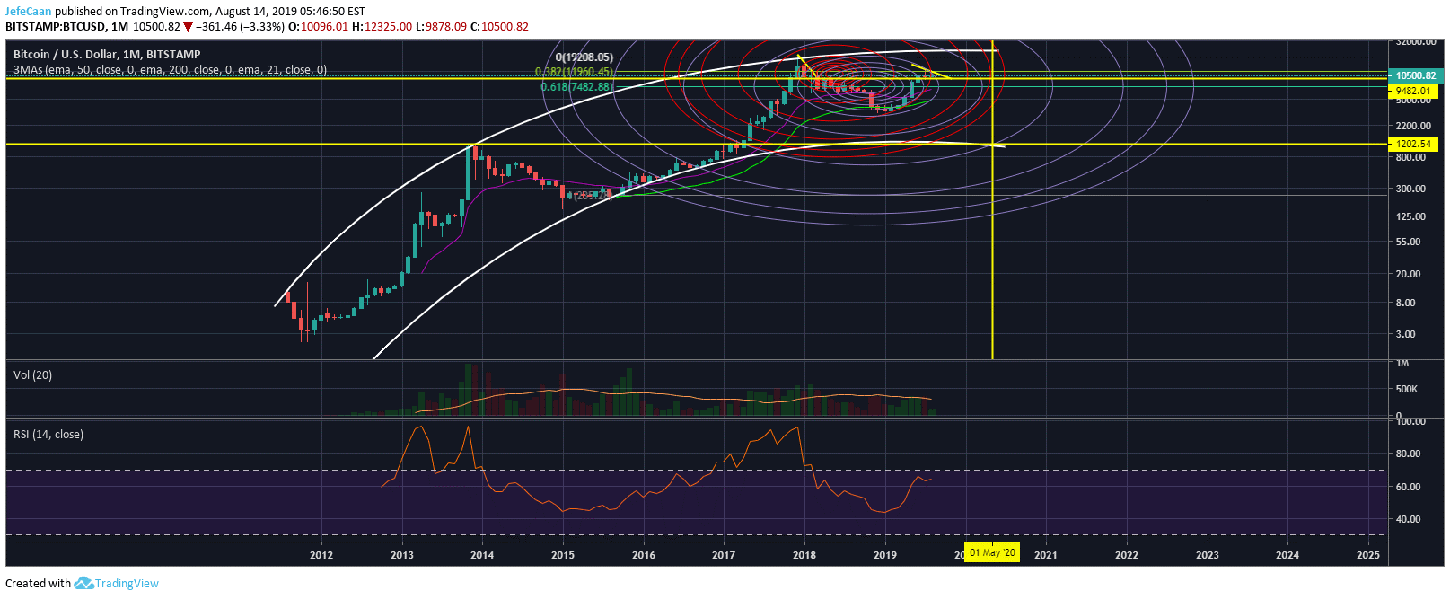Everyone is trying to time the next recession. There are analysts that have been calling for “the crash” since 2012. People have different ways of looking at this. Some use debt to GDP ratios, some use debt to the S&P 500 ratio, some use unemployment to the S&P 500 ratios. Analysts then delve deeper into specifications of the variables they intend to use. So, analysts use different models comparing different kinds of debts and different kinds of unemployment. I like to use the Insured unemployment to S&P 500 ratio. Insured unemployment means that if you get unemployed without it being your fault, the government pays you. If we look at Continued Claims (Insured Unemployment) on the monthly chart, we can see that it is close to where it was during 1975.
In other words, there are plenty of jobs around because there are plenty of businesses around. More than a decade long quantitative easing after the last financial crisis made borrowing cheaper. So, people borrowed money from the banks and started businesses. Central banks around the world started cutting rates and there was free money to be injected into everything. The end result of all that was a massive boom in the stock market as shown by the S&P 500. If we look at the last two peaks in the S&P 500 and how the market corrected from there, they look minor pullbacks compared to what we will see this time. If we take a look at the chart again, we can see that the last two times the market topped out, we saw insured unemployment bottom. As we can see on the chart, insured unemployment is about to bottom again, but a lot of analysts and traders mistakenly believe that the next rise in insured unemployment is going to trigger the next recession in a year or two from now.

I disagree with that because I think the S&P 500 still has plenty of room to rally. I think we will see a sharp pullback as insured unemployment rises in the months ahead but I don’t see this triggering the next recession just yet. In fact, the Fed is very likely to go back to quantitative easing from here. We could see more rate cuts after the next pullback which will pave the way for another rally. So, what does all of this mean for Bitcoin (BTC)?
If we take a look at the monthly chart for BTC/USD, we can see that it is close to beginning a sharp downtrend. It will see the price find its true bottom below $3,000. Meanwhile, the S&P 500 will decline as well and it will be a strong decline that will maximize fears of the next recession. Smart money will buy in and the market will rally again and then the retail investors will follow. The same goes for Bitcoin (BTC). As the Fed keeps cutting rates, the stock market and the altcoin market will benefit well from this during the bullish cycle that will follow after the correction. In six to seven years from now when Bitcoin (BTC) is finally at a point where it is not making such volatile moves, maybe it will be a safe haven asset in times of crisis especially during the next depression (not recession).
Investment Disclaimer






